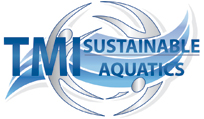Electrotherapy is the treatment of medical cases through the application of energy from electricity and different types of electrotherapy devices have been invented for the treatments. There are currently various forms of electrotherapy treatments. Electrotherapy devices are used in carrying out these treatments. The effectiveness of these devices has resulted to more intensive efforts at developing various electrotherapy devices for treating wide range of illnesses.
History of Electrotherapy Devices
The first form of treatment with electrotherapy devices can be traced to 1767 when a special apparatus was used to treat people in London’s Middlesex Hospital. Guillaume Duchenne however stated that compared to direct current, alternating current was more effective in muscle contraction triggering in 1855. In 1959, electrotherapy with direct current showed potential in treating cancer. There are presently a wide range of modern applications of electrotherapy devices.
Uses of Electrotherapy Devices
Electrotherapy devices now have a wide number of uses. They include:
- Reducing of edema through lymphatic training.
- Fecal and urine incontinence
- Iontophoresis
- Peripheral flow of blood
- Chronic and acute edema
- Repair of tissues
- Joint mobility range improvement
- Dysfunction of neuromuscular treatment
- Management of pain
Types of Electrotherapy
There are several types of electrotherapy which are conducted with the aid of electrotherapy devices. The types of electrotherapy include:
- Micro-Current Therapy: Micro-current therapy aids in reduction of inflammation and enhancing the process of healing.
- Pulsed Short Wave Diathermy (PSWD): PSWD entails treating body parts that are exposed through electromagnetic radiation of high frequency pulse.
- Percutaneous Electrical Nerve Stimulation (PENS) and Electro–Acupuncutre (EA): Both PENS and EA are similar in terms of practice and principal. They are a combination of electrical stimulation and acupuncture where electrodes are stuck on the skin as opposed to needles.
- Spinal Cord Stimulation (SCS): SCS is used to suppress pain from the central nervous system by direct spinal cord stimulation instead of the peripheral nerves close the the source of the pain.
- Inferential Current Therapy (IC): IC is a popularly applied inflammation and swelling reduction therapy which are used by physiotherapists.
- Transcutaneous Spinal Electroanalgesia (TSE): TSE was started in the early 90s and is a very developed form of electrotherapy available for relief from pain.
Different Types of Devices for Electrotherapy
To carry out the electrotherapies discussed above, electrotherapy devices are needed. These devices are made in various forms including Microcurrent (MC), High Voltage Pulsed Galvanic Stimulation (HVGPS) or Galvanic Stimulation, Interferential (IF) Electrical Muscle Stimulation (EMS) and Transcutaneous Electrical Nerve Stimulation (TENS). The types of Electrotherapy devices and their uses are explained below.

Transcutaneous Electrical Neural Stimulator (TENS)
TENS units make use of little electric currents to send pulses that have the ability to stimulate over skin surfaces and endings of nerves, after the electric currents have been adjusted. These pulses aid in pain reduction by stopping the pain signals from getting to the brain. The natural painkillers in the body production known as endorphins are also stimulated by this device. TENS are commonly applied on chronic and acute pain, neck and back syndrome, neuropathies, shoulder syndromes and arthritis amongst others.
Electro Muscle Stimulator (EMS)
EMS is used to stimulate the motor nerve of muscles after they have been adjusted. The EMS has the ability to start contractions of the muscle due to its high intensity. These therefore have a very deep effect on the muscle. The different between TENS and EMS is the fact that TENS works by stimulating the never endings of the senses with the aim of reducing pain while EMS stimulates the motor nerves of muscles for the same aim.
Muscle relaxation / contraction is known to be efficient in treating different vascular and musculoskeletal conditions. The importance of relaxation of muscle includes tenderness treatment and more circulation of local blood. EMS is also commonly applied in muscle spasms releasing disuse atrophy of muscle prevention and motion range increment.
Interferential Stimulator (IF)
IF therapy is the advanced form of TENS. It is a special way of sending frequencies of therapy to the tissue. Normal devices for TENS send very low electrical pulse frequencies which are normally between 2 and 150 Hz. Devices for IF therapy however send average frequencies which are more than 1000 Hz and are usually around 4000 Hz. Frequencies that are medium have the ability to easily pass through tissues. They can thus go very deep without inconveniencing the victim.
Interferential got its name from the fact that it is the interference between many frequencies of current that makes the IF device efficient. When more than 1 current is used, interference happens. The two currents get to intersect at a point, which is higher than TENS as a result of the ease with which medium current can penetrate. The frequency of interference produces combined current known as a beat.
Galvanic Stimulator or High Voltage Pulsed Galvanic Stimulator (HVPGS)
Galvanic implies a direct or unidirectional current. For a direct current to be galvanic however, it must be unvarying or constant. HVPGS is different from TENS in that it uses a direct current that is constant. HVPGS enhances healing of injury, stimulation of flow of blood and pain alleviation through direct current, amperage that is generally low and high voltage application. Other names for galvanic stimulation include Direct Current Stimulation (DC), High Voltage Stimulation (HVS), High Voltage Pulsed Galvanic Stimulation (HVPGA), High Voltage Galvanic Stimulation (HVGS) and High Voltage Galvanic (HVG).
MIcrocurrent Electrical Neuromuscular Stimulator (MENS) or Microcurrent Stimulator (MC)
MC Therapy applies electrical currents that are very tiny (electricity quantity measured in micro amps or millionths of an ampere with the symbol A) to cure the body’s soft tissues and pain relief. The use of micro current differentiates MC from the normal TENS. The maximum limit for MC is 8000 A or 8mA as opposed to TENS that can send currents of about 80000A or 80mA. MC can however function at around 900A or 0.9MA. The most efficient level of current is however estimated at between 20 and 500 MicroAmps.
Specialized Devices
There are other devices that use similar electrotherapy mechanisms listed above. They include the Electro acupuncture and Acupuntoscopes which is used in acupuncture, the traditional practice of medicine in China. They sometimes function like TENS and many devices for massaging of the face and beauty of the skin.

